This palace remains one of the most mysterious and attractive tourist destinations in India.
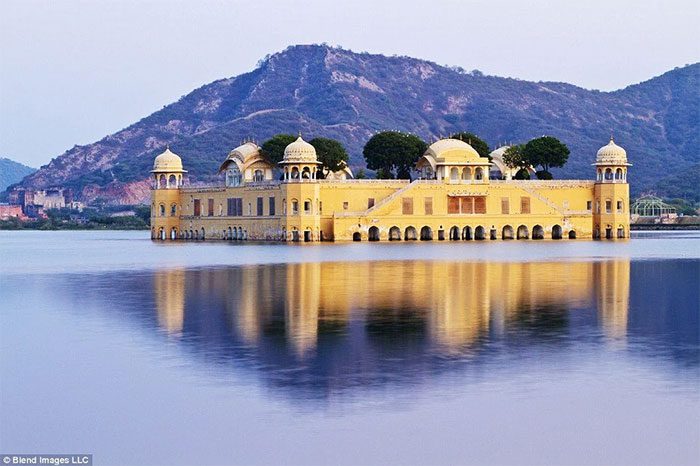
Jal Mahal Palace.
Jal Mahal, also known as the “Water Palace,” is an abandoned structure located in Man Sagar Lake in Jaipur, Rajasthan, India. The palace makes a striking impression as it sits in the midst of the vast lake and is surrounded by the Nahargarh hills.
Jal Mahal was commissioned by King Madho Singh in 1750. Later, his son, Madho Singh II, decided to renovate the area by adding gardens and altering the exterior.
Notably, Jal Mahal is estimated to cover several thousand square meters yet has no rooms for habitation. Inside, there are only gardens intended for the royal family’s recreation. The king would visit Jal Mahal to stroll in the gardens or host banquets during each duck hunting season, inviting royal family members to picnic there. From the tranquil garden, one can gaze out over the shimmering lake, adorned with flowers such as water hyacinths and jasmine.
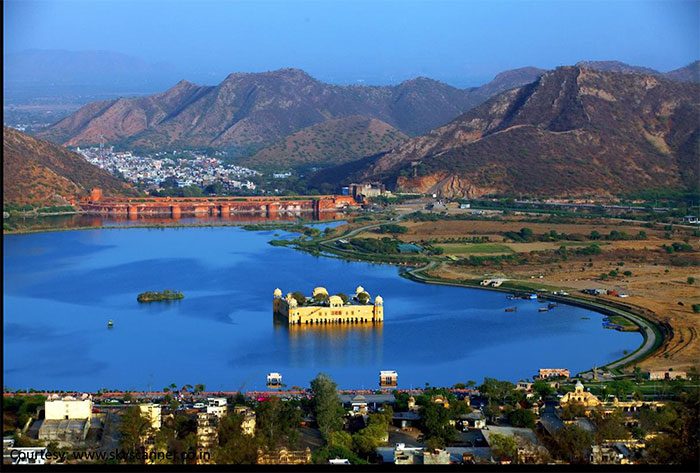
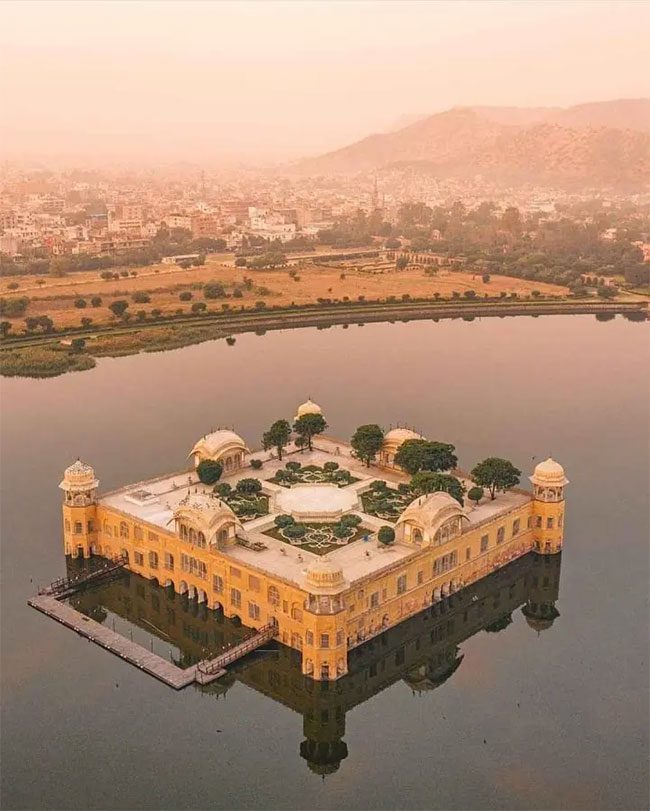
Aerial view of Jal Mahal Palace.
Thus, Jal Mahal has become a symbol of Rajput architecture and the engineering excellence of 18th-century India. Its allure stems not only from its grand and magnificent exterior but also from the mysteries that lie within.
The entire palace is constructed from red sandstone sourced from Jaipur. Another unique feature is that the palace has five floors, but only the top floor rises above the water, while four floors are submerged. This is due to a dam built between the surrounding hills to prevent flooding, which has resulted in part of the Jal Mahal being submerged.
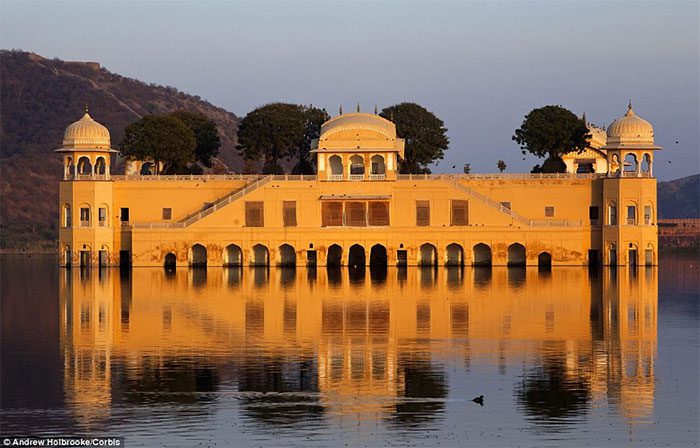
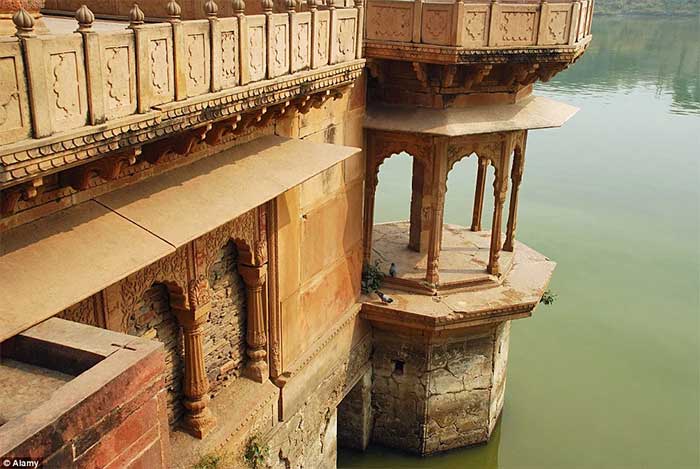
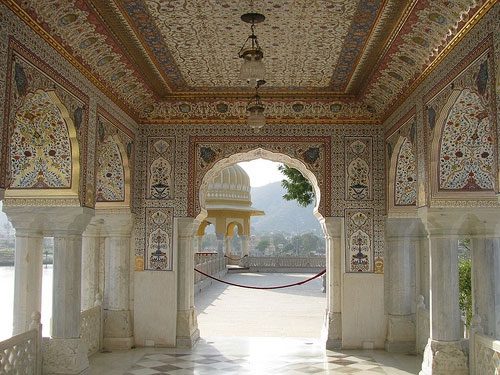
Close-up of the intricate carvings of the palace.
The best time to admire Jal Mahal is at night when it is illuminated. The lake’s surface and the dark sky accentuate the shimmering beauty of the Water Palace under the yellow lights. The palace’s reflection on the water creates an almost “surreal” sensation.
Moreover, the interior of the palace is well-preserved, featuring exquisite hand-painted murals. The staircases, domes, and octagonal towers at each corner of the structure retain their elegance and luxury, even after 300 years.
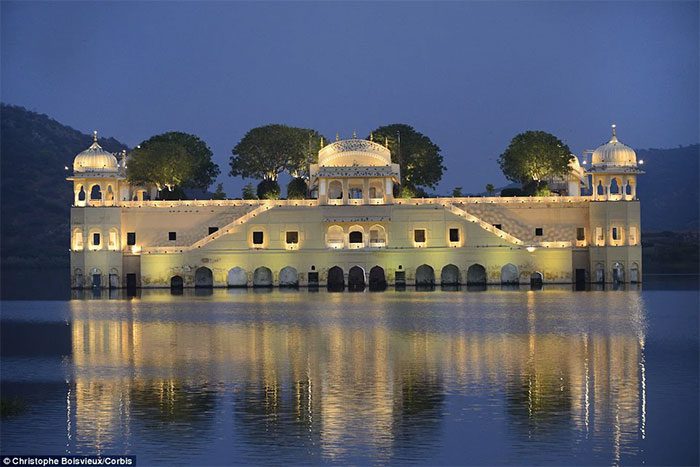

Jal Mahal shines brightly when illuminated.
However, few know that before regaining its fame today, Jal Mahal was forgotten for over 200 years due to untreated sewage contaminating the Man Sagar artificial lake. The lake was originally constructed in 1610 to address famine and water shortages. Over the decades that followed, it became a water source for the surrounding residents and a “common home” for migrating bird flocks.
After being polluted by direct sewage, it wasn’t until 2004 that a private company in India took action to clean up this artificial lake, transforming it into a new tourist destination. The restoration process went smoothly over six years, improving the lake’s water quality and consequently leading to a surge in tourist numbers.
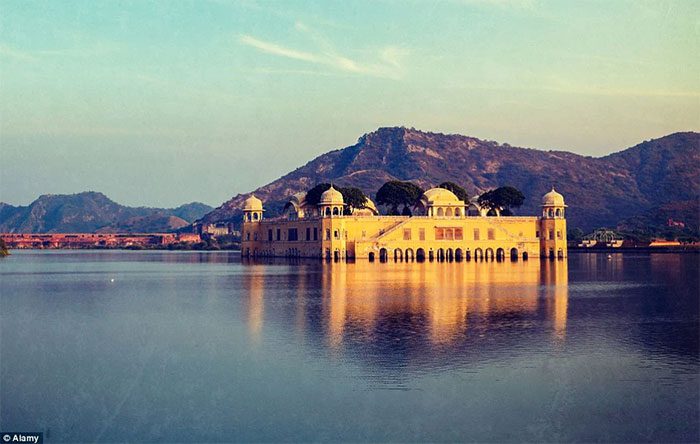

Visitors are not allowed inside the palace but can view it from outside by boating.
Jal Mahal is one of the best-preserved monuments in India to this day. It is also one of the most photographed sites and attracts tourists from around the world’s most populous country. Although visiting the Water Palace is currently prohibited, tourists can still take boats around the lake to admire this majestic structure up close.


















































